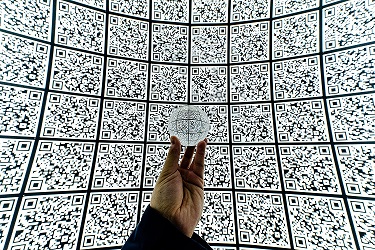
What is a QR code?
QR stands for Quick Response. What is a QR code? A two-dimensional version of the barcode, composed of black and white pixels.
Made in Japan
The QR Code was born in Japan in 1994.
Its inventor, Masahiro Hara, was a chief engineer at Denso Wave, an automotive parts manufacturer.
His goal? Find a system to better track the path of spare parts and speed up the logistical processes of production in Toyota’s plants.
Inspired by the design of the game of go, Masahiro invented the QR Code, a two-dimensional barcode made of black squares on a white background.

Unlike a UPC — Universal Product Code - barcode, the QR Code allows for faster readability and can store approximately 100 times more data. Since the advent of smartphones, QR codes have become an integral part of mobile marketing.
The advantages of QR codes?
- Contains more information than a barcode
A barcode can only contain one string of information in the form of a numeric code. This makes it useful in environments such as retail. It allows to quickly and precisely identify a product to which a unique number is attached. However, it doesn’t offer much more.
On the other hand, a QR code can contain much more information. These can be in different forms, such as words and characters. It offers these capabilities while occupying the same space as a barcode, and is just as easy to generate or print.
- Reduced number of errors
A barcode is not protected against duplication. The greater information storage capacity of a QR code allows for the integration of security mechanisms.
- More accessible reading and printing
QR codes can be read and understood by smartphones and digital cameras. Barcodes, on the other hand, require special technology to be read and interpreted.
Like a barcode, a QR code only requires black and white printing (although any color or even multiple colors can be used).
- Increased security
The encryption of the information contained in the QR codes offers an additional level of protection.
Different types of QR codes?
It is possible to create QR codes of different shapes and styles and to realize codes for different types of interactions.
« Back to Glossary Index
